|
|
|
|
~CINNAMON BARK TREE~ Cassia Trees LIVE SPICE TREE (3 SEEDLINGS) 9b
Price: $69.99
|
Cinnamomum aromaticum
Cassia
Cinnamon
Family (Lauraceae)
Native to China and Vietnam
Cinnamon Bark Tree
Cinnamomum aromaticum
The entire world is familiar with the sweet and pungent taste of cinnamon. Cinnamon is
the common name for the trees and shrubs that belong to the genus Cinnamomum of the
Laurel family (Lauraceae).
|
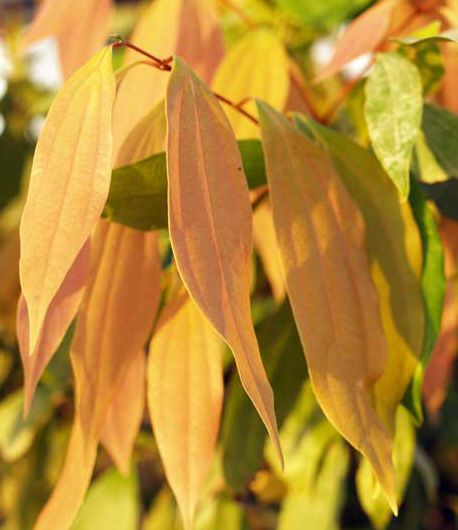 |
|

You
are bidding on * small bare root seedlings with small root systems 3-8 inches tall with * leaves
born and grown in Hawaii.
|
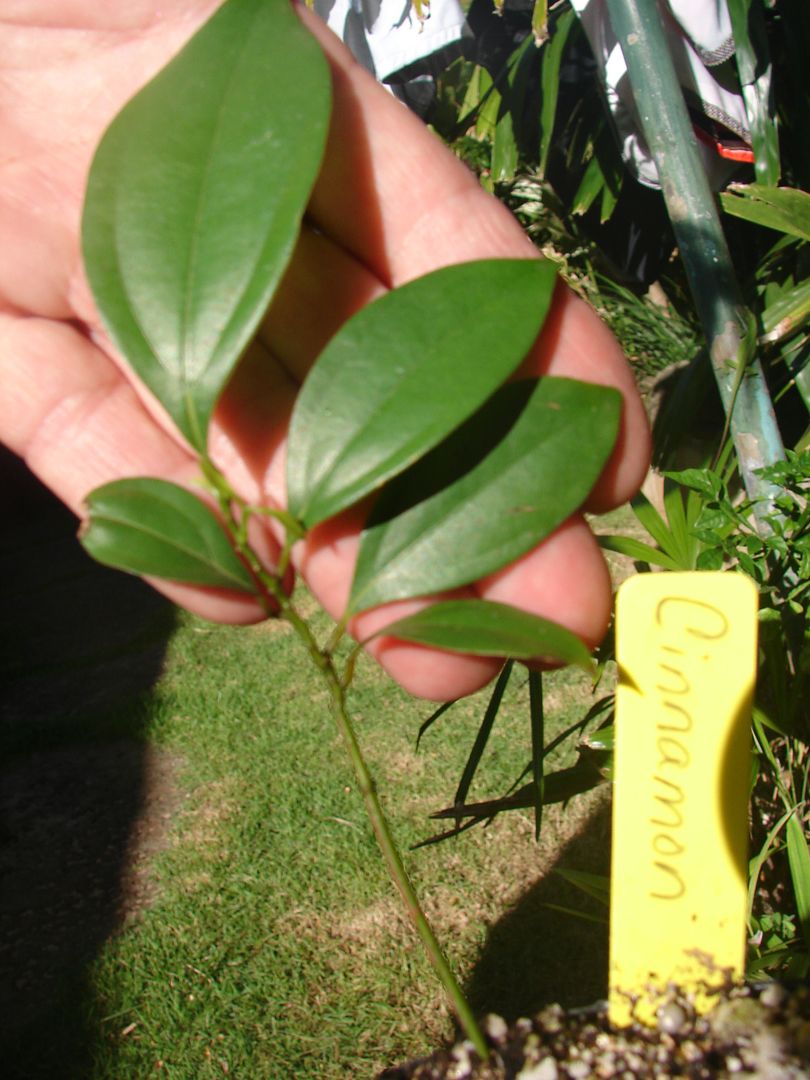 photo of similar item |
Cassia Cinnamon
Cinnamon Bark Tree
Spices were rare in
antiquity, because they came from distant lands and travel was
difficult. They were regarded as gifts fit for royalty and
potentates.
This spice was imported from China to Egypt as
early as 2000 B.C.E.
Later, it was
commonly used on funeral pyres in Rome. In 65 C.E., Emperor Nero is said to have burned a
years supply of cinnamon at his wifes funeral.
Height: 20-30 ft. (6-9 m)
Hardiness: USDA Zone 9b: to -3.8 °C (25 °F)
Sun Exposure: Sun to Partial Shade
Bloom Color: Pale Yellow
Bloom Time: Late Fall/Early Winter
Foliage: Evergreen
|
Cinnamon Bark Tree
Cinnamomum aromaticum |
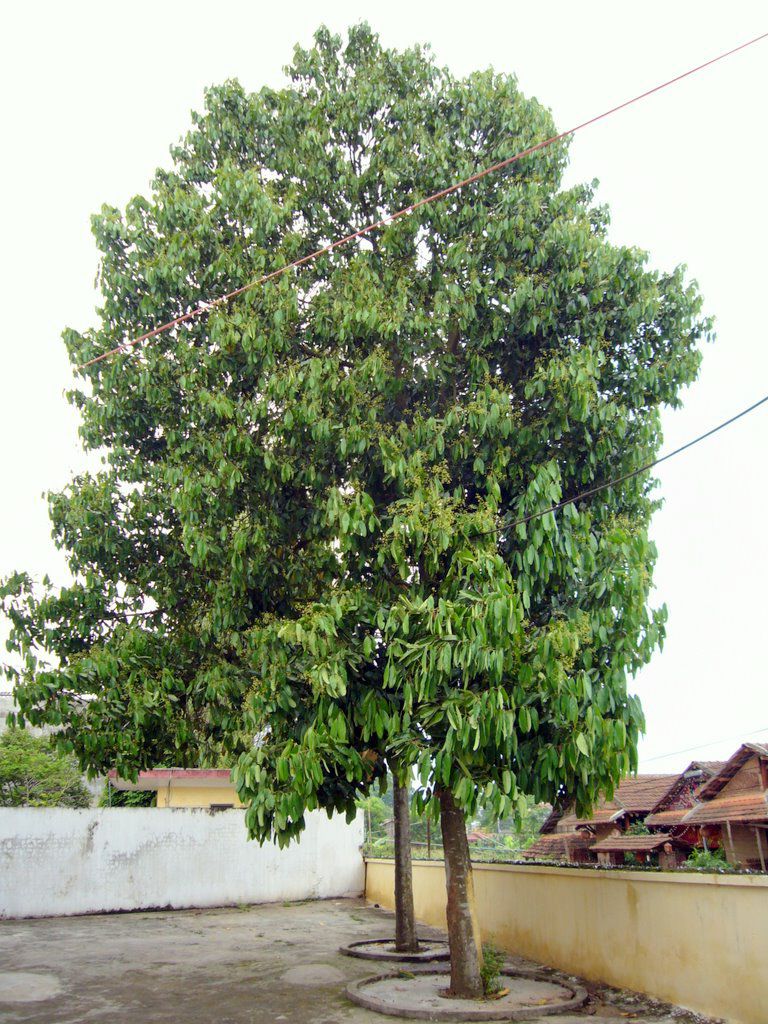
Cinnamomum aromaticum is the source of cinnamon that we commonly buy. Cinnamon has
been a favorite spice since biblical times, and since then has evolved many uses. It has
played key roles in nutrition, medicine, religion, and the botanical economy. Cinnamon is
a major product sold in the U.S. in any given grocery store. It can be bought in its pure
form as cinnamon sticks, spice, or oil.
|
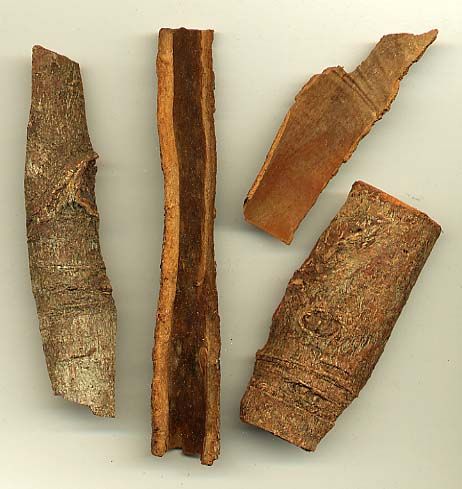 |
Cassia cinnamon (Cinnamomum aromaticum) is a close relative to cinnamon (C.
verum, C. zeylanicum), Saigon cinnamon (C. loureiroi, also
known as "Vietnamese cinnamon"), camphor laurel (C. camphora),
malabathrum (C. tamala), and Indonesian cinnamon (C. burmannii). As with these species, the dried bark of cassia is used as
a spice.
Cassia cinnamon's flavor is less delicate than that of true cinnamon; for this reason, the
less expensive cassia is sometimes called "bastard cinnamon".
Whole branches and small trees are harvested for cassia bark, unlike the small shoots used
in the production of cinnamon; this gives cassia bark a much thicker and rougher texture
than that of true cinnamon.
|
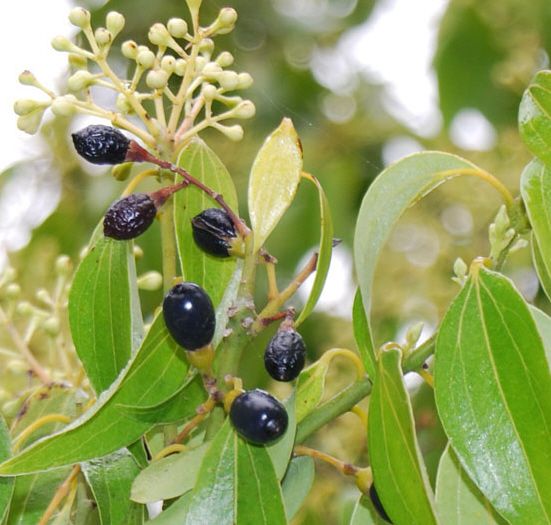
Cassia Cinnamon |
Various varieties of
cinnamon exist, only two of which are commercially popular: plain cinnamon -Cinnamomum
zeylanicum, and Cassia cinnamon - Cinnamomum aromaticum, native to Burma and
South China (not to be confused the Cassia plant). The spice cinnamon is obtained from the
young bark of the branches.
The two differ in appearance in the fact that the bark of cinnamon is thin and
yellowish-brown, and the bark of Cassia is thicker and gray in color.
Cinnamomum zeylanicum possesses the stronger aroma, but to deduce the form of the
plant from the appearance of the spice is practically impossible.
Cinnamon spice comes primarily from the Sri Lankan cinnamon known as Cinnamomum
zeylanicum. Obtained from this tree by drying the central part of the bark, which is
then sold in stick or powdered form.
The cinnamon oil is extracted from the waste products of drying and the pointed black
fruits of this tree. This oil is used for medicinal purposes or flavoring.
|
|
Cinnamon Tree Frog |
|
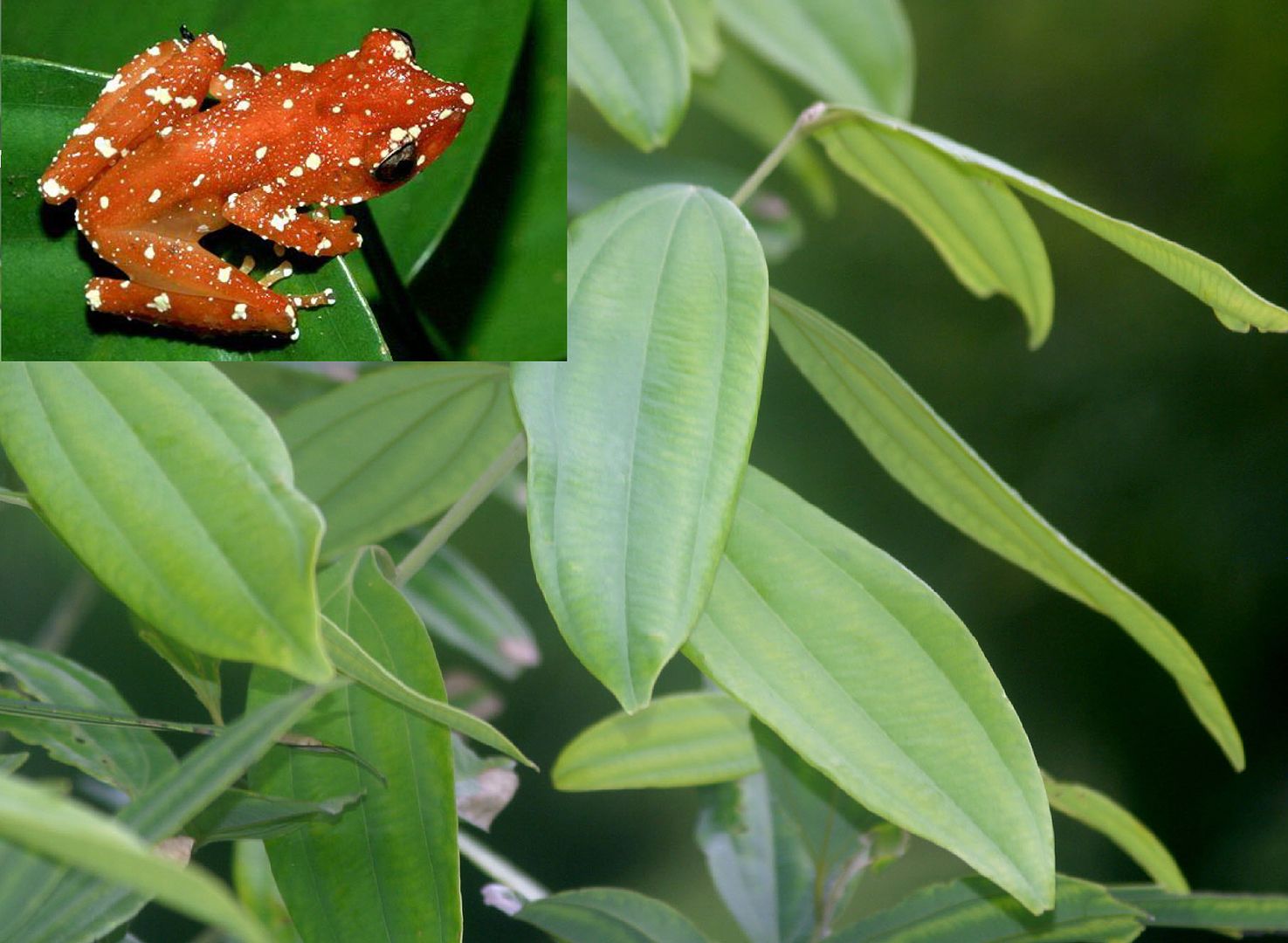
Most of the cinnamon spice sold as cinnamon in the United States and Canada (where true
cinnamon is still generally unknown) is actually cassia. In some cases, cassia is labeled
"Chinese cinnamon" to distinguish it from the more expensive Cinnamomum
zeylanicum.
Cassia
bark is cinnamon flavored and also used for a variety of medicinal purposes. Leaves also
have some medicinal oil qualities. The trunk is smooth and whitish bark of this tree has a
very strong cinnamon scent. The aromatic bark of this tree is ground to make commercial
cinnamon, the leaves are used to make perfumes, and the dried, unripe fruits are used in
cooking, similar to cloves. |
|
Cinnamon Bark Tree
The Cassia Cinnamon tree is an
attractive small tree, up to to 1015 m tall, with grayish bark and hard elongated
leaves that are 1015 cm long and have a decidedly reddish color when young.
Mature foliage is shiny, light green leaves which can
be four to seven inches long. New leaves emerge pale to pinkish.
The flowers are inconspicuous, and the panicles of the yellowish flowers are usually
longer than the leaves. These panicles bear pointed black fruits from which cinnamon oil
is extracted.
The cinnamon sticks are made from the bark of the tree and are rolled naturally when the
bark is sun-dried.
The tree grows best
in deep, well-drained, moist soils. |
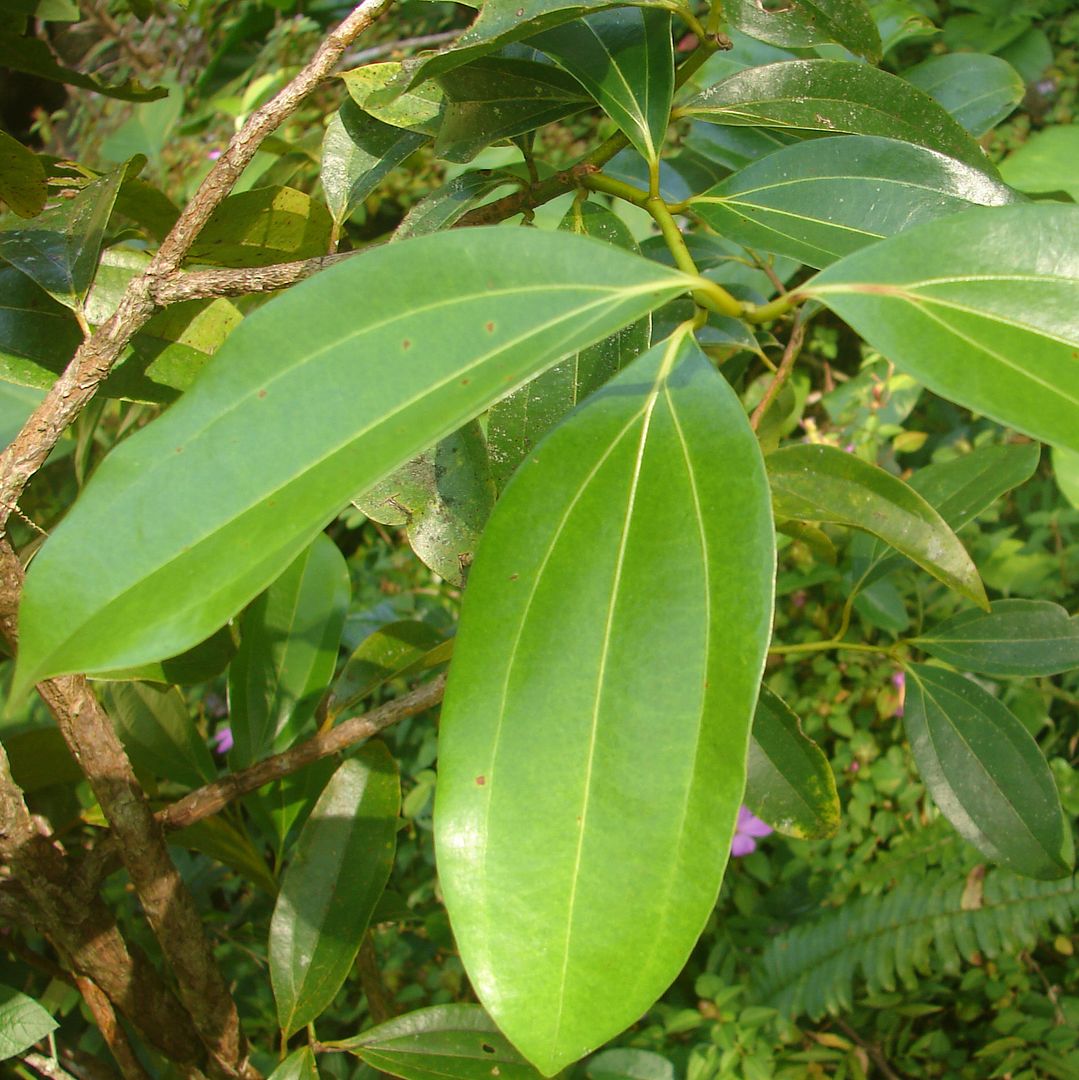 Cinnamomum aromaticum
|

|

|
|
|
All good things take time, so I grow my plants and rare palms in  my ebay store. my ebay store.
Much more to check out or just get a little education on in my store.
|
|
|
|
|

 Shipping
Shipping

We ship via USPS Mondays-Wednesday with Delivery
confirmation.
All
plant materials are required by LAW to inspected and certified by
USDA prior to export Hawaii to the US Mainland.
After
Inspection, USDA stamps released for export Hawaii to the US
Mainland. All items are delivered to USDA Inspection Station at
Honolulu International airport.
Last and
usually least is USPS postage (shipping).
|
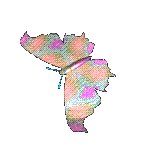
 Payment
Payment

We
accept online payments only through PayPal, Cash payments are only acceptable for
in-person payments and cash-on-delivery (COD). Cash payment can not be sent through the
mail.
Please only one Paypal payment. Multiple paypal payments are NOT eligible for
discounts.
We will ship once a week - ON or BEFORE WEDNESDAYS, because
of the special stamps needed to ship plants and cuttings to you. This can only be
done at the Dept. of Agriculture. If payments are not met before that MONDAY, your
items will be shipped the following week and lose the combined discount opportunity.
Non-paying bidders may receive negative feedback and will be reported as an unpaid item to
eBay.
Payment must be received
within 4 days of the auction ending.

 As each order is packed and prepared separately you will pay the quoted S/H charges
individually per item. If you buy the same species in that item it does calculate out the
discount (i.e.: additional item $7.61). My stores' combined shipping is built in for same
items rather than a varied selection. S/H includes postage, USDA certification and inspection,
proper packing and delivery to Airport for prompt delivery. I can't really change any
of these. If you want one of this and one of that, it is hard to discount much as each
different species requires it's own prep, packing, then at USDA each has to be
unwrapped and inspected then repacked. USDA requires me to clean and prepare every last
piece before we drive them to the Inspection Station on the other side of the island. It
takes my wife and I, a day to pack items and get ready to ship. The whole next day we
drive around the island and get inspected (2-3 hours), then drive to the Airport Post
Office to drop off. It takes the same work with the same type item if you can understand.
As each order is packed and prepared separately you will pay the quoted S/H charges
individually per item. If you buy the same species in that item it does calculate out the
discount (i.e.: additional item $7.61). My stores' combined shipping is built in for same
items rather than a varied selection. S/H includes postage, USDA certification and inspection,
proper packing and delivery to Airport for prompt delivery. I can't really change any
of these. If you want one of this and one of that, it is hard to discount much as each
different species requires it's own prep, packing, then at USDA each has to be
unwrapped and inspected then repacked. USDA requires me to clean and prepare every last
piece before we drive them to the Inspection Station on the other side of the island. It
takes my wife and I, a day to pack items and get ready to ship. The whole next day we
drive around the island and get inspected (2-3 hours), then drive to the Airport Post
Office to drop off. It takes the same work with the same type item if you can understand.
|
|
|
|
Please Do NOT email me a week after potting your plant, and make a claim it
arrived damaged. From delivery confirmation, you have only 48 hours from
delivery confirmation to make any claim.
|
All claims need to be supported with
Photos of the damaged plant(s) as packed/unpacked, the box if damaged,
the packing materials and any documents. I am very reasonable and
understanding, anything can happen to small plants in transit.
The expense to send it to you is most
of your payment. To send any replacement(s), I try to piggy back with
your next order.
Replacement is not an option for
CUSTOMS SEIZURE.
|
|
|
|
|

|
|
|
|

my
dog Taz will fetch your email to me
If you are dissatisfied
with the item, please contact me
before leaving a
negative or neutral comment.
I want you to be
satisfied.
Mahalo iâ `oe no ke kipa
`ana mai. E kipa mai hou!
|
Rare Palm Seeds
Fresh
Highest Quality
Seller warrants seed to be of the variety and quantity advertised.
Safe delivery is guaranteed and seeds lost or damaged during shipment will be replaced at
seller's expense. Claims must be made within 7 days of shipment. All other replacements,
refunds, returns and exchanges will be made at the sole discretion of the seller.
Seed is a live product which depends on many important related grower skills such
as proper planting time, seed depth, type of soil, irrigation, proper use of fertilizers,
weed controls, fungicides, insecticides, disease free soil, and reasonable weather
conditions during the growing period. Germination is affected by such factors as
temperature, moisture content, light intensity and contamination of planting media. These
factors are totally out of the seller's control and are the buyer's responsibility and
risk. Consequentially, the seller cannot unconditionally guarantee seed to perform
properly regardless of conditions or the buyer's methods or mistakes.
|
|
|
 |
|
|
Items must be returned within 14 days .
Refund will be given as Money back.
Refund policy details:
Restocking fees: No
|
Destination: United States |
|---|
|
| STANDARD | Standard | $0.00 | $0.00 | | | USPS | Priority Mail® | $9.96 | $5.96 | | | USPS | Priority Mail Express® | $29.96 | $9.96 | | Destination: Worldwide |
|---|
|
| STANDARD | Standard | $29.96 | $15.96 | | | USPS | Priority Mail Intl® | $49.96 | $15.96 | | | USPS | Express Mail Intl® | $69.96 | $15.96 | |
|
Type | Instructions to Buyer |
|---|
| Paypal | null |
|

|
|